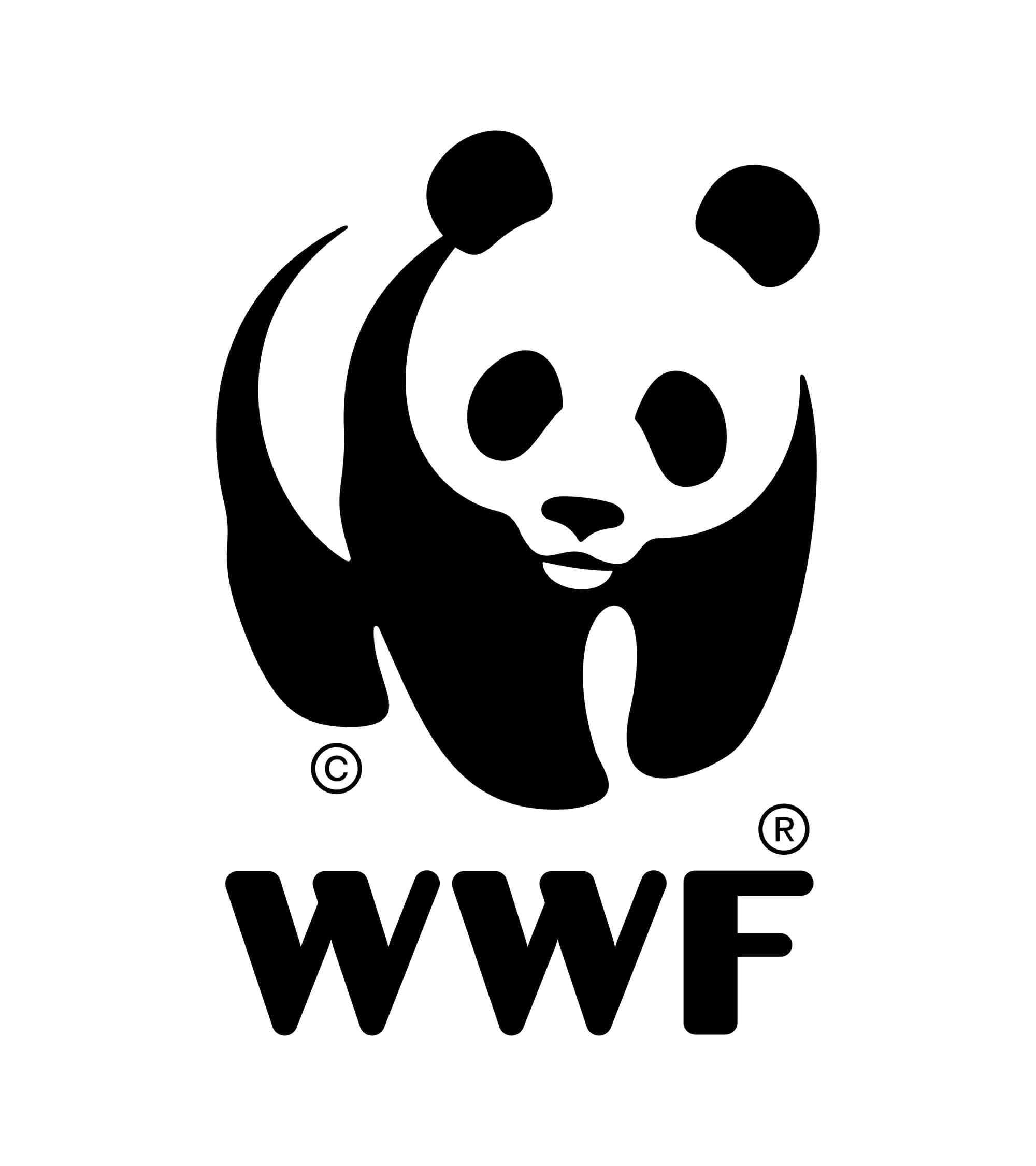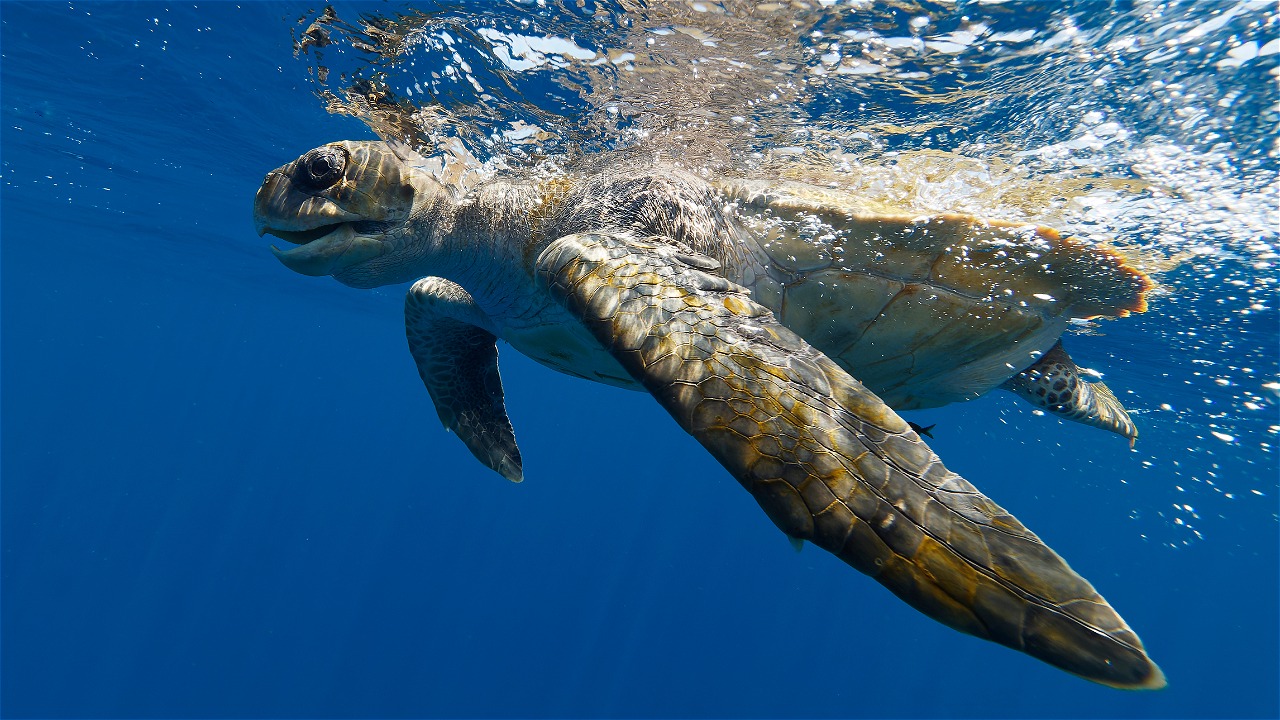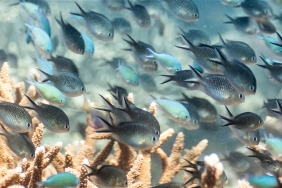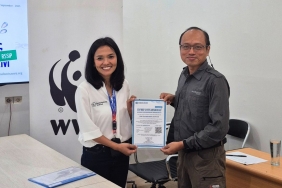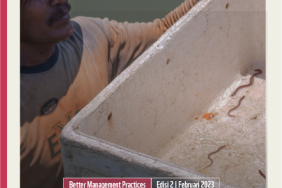FOUR DECADES OF SEA TURTLE CONSERVATION IN INDONESIA: SOME CASE STUDIES SHOW 50% OF TURTLE POPULATIONS SAVED
Media Release: To be broadcast immediately October 21, 2012
Four Decades of Turtle Conservation in Indonesia: Some Case Studies Show 50% of Turtle Populations Saved Turtle Conservation in Indonesia.
Lombok, NTB (21/10) - "Conservation is a cultural act, therefore it must be accepted if each location carries out conservation efforts differently. But if discussed, it can narrow down and reach an agreement," said Dr. Ida Bagus Windia Adnyana, Head of the Turtle Study Program at the Faculty of Veterinary Medicine, Udayana University, in his briefing to participants of the Mini Symposium Measuring the Success of Sea Turtle Conservation Programs in Indonesia, organized by the Directorate of Conservation of Fish Areas and Species, Ministry of Marine Affairs and Fisheries of Indonesia (KKJI KKP) in collaboration with WWF-Indonesia in Lombok, West Nusa Tenggara (21/10/2012).
Toni Ruchimat, Director of KKJI, in his speech said that this symposium is needed because Indonesia needs to collect sea turtle conservation data that is currently scattered in each conservation location. "This symposium brings together practitioners from all over Indonesia, and will produce national sea turtle population data. I really appreciate all the symposium participants, and after this symposium an Indonesian turtle conservation network will be formed," Toni said.
The mini symposium was attended by sea turtle conservation practitioners from Aceh, West Sumatra, West Java, East Java, Bali, West Nusa Tenggara, West Kalimantan, East Kalimantan, Southeast Maluku, West Papua. Nineteen speakers presented data, experiences and lessons learned from sea turtle conservation activities in their respective locations.
"Quantitative data on sea turtle populations cannot yet be produced, because Indonesia does not yet have information on all sea turtle nesting habitats," Windia continued. During the symposium, data was collected from the 10 largest nesting sites in Indonesia, and it was found that in all of these locations 100% of the eggs can be secured from theft, and threats from predators and nature can be minimized.
Windia said, "The data collected here, if you want to quantify it, can be said that 50% of the total hatchlings can be saved. This is the success of conservation efforts in Indonesia that have been carried out for almost 4 decades. We must be optimistic, because the work so far has not been in vain."
"The threats to sea turtles are still the same as before, the trade in meat and eggs is still there, coupled with the emergence of demand for plastron for the international market," said Wawan Ridwan, Director of the Marine and Fisheries Program of WWF-Indonesia on the occasion of closing the symposium. Threats from predators still exist, as well as conflicts over land ownership and from climate change, such as the large number of eggs that do not hatch due to infertility and abrasion.
With this variety of threats, it is not enough to simply carry out conservation activities, adaptation strategies are needed. Threats from outside the region, such as the international plastron trade, cannot be addressed by local law enforcement activities alone, but must be through various regional/international initiatives.
There are also threats from fishing practices that often lead to bycatch. In mitigating bycatch, the success of sea turtle conservation efforts is evident, as the amount of sea turtle bycatch that can be released alive is 98% in the longline tuna fishery using circle rods.
In many places, especially in the Lesser Sunda region (West Java, East Java, Bali and NTB), turtle-based tourism initiatives are beginning to develop. There are conservation opportunities there, but policies, technical and implementation guidelines that are relevant to the biological needs of sea turtles are needed to ensure that sea turtle-based tourism provides more benefits than harms. There is a need to develop policies and guidelines that are relevant to the biological needs of sea turtles.
On this occasion, a network of sea turtle conservation practitioners in East Java and western Sunda Kecil was successfully initiated. This network is coordinated by Ikram M. Sangaji, Head of the Coastal and Marine Resources Management Agency (BPSPL) of KKP Denpasar.
***
For more information, contact:
- Ida Bagus Windia Adnyana, Faculty of Veterinary Medicine, Udayana University; 08123828010, adnyanawindia@gmail.com
- Creusa Hitipeuw, Marine Species Specialist WWF-Indonesia; 08124856441, chitipeuw@wwf.or.id
- Dewi Satriani, Marine Communications Manager WWF-Indonesia; 0811910970, dsatriani@wwf.or.id
Note to the Editor:
Presenters in this mini symposium are from:
- Abun - Tambraw district, West Papua
- Piai Island - Raja Ampat Regency, West Papua
- Derawan Islands - Berau Regency, East Kalimantan
- Tamiang Bay Regional Marine Conservation Area - Kota Baru District, South Kalimantan
- Paloh - Sambas Regency, West Kalimantan
- Pangumbahan - Sukabumi District, West Java
- Meru Betiri National Park, Sukamade - Banyuwangi Regency, East Java
- Anambas Islands - Anambas Islands Regency, Riau Islands
- Karabak Ketek Island - Kab. Pesisir Selatan, West Sumatera
- Many Islands - Aceh Besar district, Nangroe Aceh Darussalam
- Banyuwangi Turtle Foundation - Banyuwangi Regency, East Java
- Perancak - Jembrana district, Bali
- Kedonganan - Badung Regency, Bali
- Serangan - Denpasar Municipality, Bali
- Kei Kecil - Southeast Maluku district, Maluku
- Alas Purwo National Park - Banyuwangi Regency, East Java
- WWWF-Indonesia Bycatch Mitigation Program
